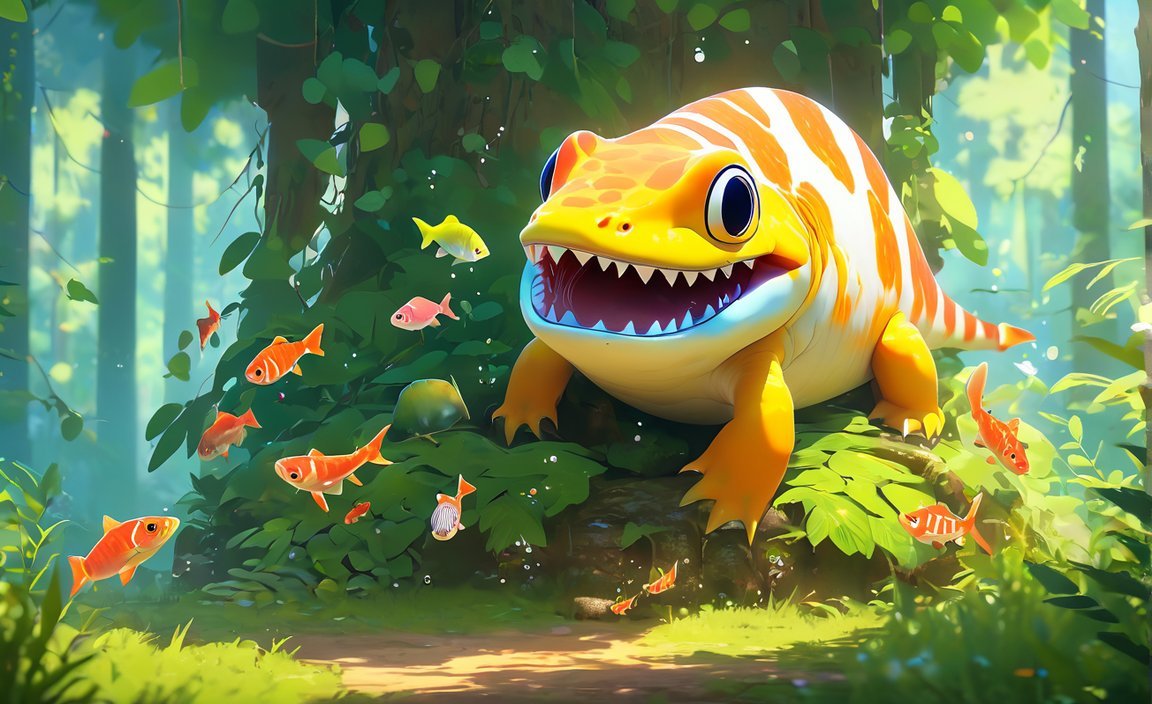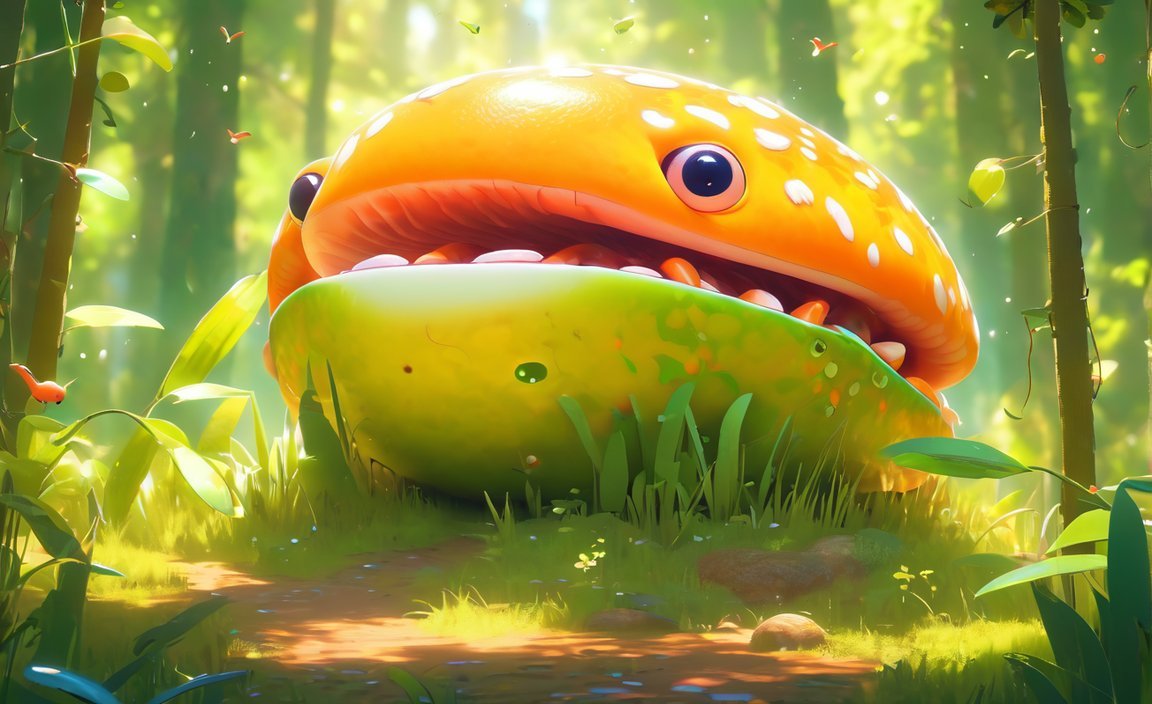Welcome to the mesmerizing world of forest ecosystems, where the delicate web of life is intricately woven through a captivating food chain. In this article, we will journey through the enchanting forests and unravel the secrets of nature’s interconnectedness. Brace yourself as we dive into the depths of the forest floor, ascend the towering canopies, and embrace the wonders of the food chain in forests. Prepare to be amazed by the harmonious dance of predators and prey, as we unlock the mysteries of the intricate food chain that sustains life in these captivating habitats.

Key Takeaways:
- The forest ecosystem is a complex web of interconnected organisms, with the concept of a food chain at its heart.
- The energy for a forest food chain is supplied by the sun, with plants being the primary producers that convert sunlight into food.
- Consumers, such as herbivores, carnivores, omnivores, and scavengers, obtain their energy by consuming either plant or animal food.
- Decomposers, like fungi, bacteria, and worms, play a critical role in breaking down dead organic matter and releasing nutrients back into the ecosystem.
- In a forest, various food chains exist, showcasing the diversity and interdependence of organisms.
- It’s essential to understand that these examples represent simplified food chains, as in reality, food chains in a forest ecosystem are interconnected and form a complex food web.
- By understanding the intricacies of the food chain in a forest ecosystem, we can appreciate the delicate balance of life and the importance of conservation efforts in protecting these natural habitats.
Food Chain in Forest
The forest is bustling with life, and at the heart of this vibrant ecosystem lies the intricate concept of a food chain. This captivating web of interconnected organisms sustains life and maintains the delicate balance of nature. But what exactly is a food chain?
A food chain is a model that illustrates the flow of energy in an ecosystem, including the abiotic factors like the radiant sun. In a forest, the food chain plays a vital role in sustaining life and maintaining the delicate balance of nature. The energy that powers the forest food chain is provided by the sun, and it all starts with the primary producers.
Primary producers, namely plants, are the backbone of the food chain. Through an incredible process called photosynthesis, these green wonders convert sunlight into food, making them the ultimate energy source in the forest. These autotrophic organisms feed on inorganic substances and are the foundation on which the entire food chain rests. They are the ones who absorb the sun’s energy and transform it into nutrient-rich sustenance.
From these primary producers, energy moves on to the next level in the forest food chain—the consumers. Consumers are the animals that obtain their energy by consuming either plant or animal food. They come in a variety of forms, including herbivores, carnivores, omnivores, and scavengers.
Herbivores are animals like deer, who feed exclusively on plants. By dining on leaves, grasses, and other vegetation, they acquire the energy they need to survive and flourish. They are truly the vegetarians of the forest.
Carnivores, on the other hand, are the meat-eaters of the forest. Wolves, for instance, are carnivores that prey on other animals, establishing a deadly but necessary link in the food chain. They acquire their energy by consuming the flesh of their prey.
Omnivores are the versatile eaters of the forest. They have a diet that includes both plant and animal matter. Picture monkeys munching on fruits and insects, or bears snacking on berries and salmon. They are the boundary-crossers of the food chain, balancing their energy intake through a diverse menu.
And then there are the scavengers. Think of vultures who feed on dead organic matter, recycling it back into the ecosystem. These decomposers, along with various organisms like fungi, bacteria, and worms, play a key role in breaking down complex organic compounds into simpler forms. This process releases nutrients back into the ecosystem, providing nourishment for the primary producers and completing the food chain cycle.
It’s important to understand that the examples of food chains above merely scratch the surface of the complexity found in a forest ecosystem. The reality is that food chains in a forest are interconnected, intertwining to form a complex food web. Each organism in the forest is part of multiple food chains, and energy can flow through various paths within the ecosystem.
To provide a clearer understanding of the intricacies of the food chain in a forest ecosystem, let’s explore a few simple examples:
- Grass -> Deer -> Wolf
- Leaves -> Caterpillar -> Bird
- Fruits -> Monkey -> Leopard
As you can see, even in these simplified food chains, each organism plays a critical part in nourishing the next link. It’s a beautiful dance of energy and sustenance, showcasing the diversity and interdependence of organisms in the forest.
By understanding the delicate balance of the food chain in a forest ecosystem, we can truly appreciate the intricate web of life that exists. The forest is a constant reminder of the wonders of nature, urging us to protect and value these natural habitats for future generations.
If you want to learn more about the forest food chain and its significance in the ecosystem, reputable sources like greenlivinganswers.com and watstonforestry.co.uk provide detailed and informative content.
Discovering the secrets of the forest food chain brings us closer to understanding the magic and fragility of our natural world. Let us embrace the responsibility to protect and preserve this delicate web of life that thrives in our forests.
The East Coast Mountain Range is a breathtaking sight to behold. Explore its majestic beauty by clicking here.
Experience the vibrant community of Greenwood, SC through its exciting events. Stay up to date with everything that’s happening by clicking here.
The primary consumers and their role in the food chain
When we enter a forest, we become part of an intricate web of life. Every organism, from towering trees to tiny insects, plays a crucial role in the delicate balance of nature. The food chain in a forest ecosystem reveals the interdependence between organisms, and at the heart of this web are the primary consumers.
What are primary consumers?
Primary consumers are the herbivores that feed directly on the producers, which are typically plants in a forest ecosystem. They are the essential link between the producers and the higher-level consumers in the food chain. When primary consumers feast on plants, they acquire the nutrients and energy needed to survive and thrive.
Who are the primary consumers?
In a forest ecosystem, primary consumers can take various forms. From graceful deer to nimble rabbits and tiny insects, these herbivores sustain themselves by grazing on the abundance of plant life. They eat grasses, shrubs, berries, and even trees, converting the stored glucose in plants into energy for their own sustenance.
The crucial role of primary consumers
The primary consumers not only fulfill their own needs but also serve as a vital energy bridge in the food chain. By consuming plant material, they transfer the energy stored in vegetation to the next trophic level, which consists of the secondary consumers.
Understanding the flow of energy
To truly grasp the significance of primary consumers, we must examine the flow of energy in a forest’s food chain. It all begins with the primary producers, such as plants, converting sunlight into food through the process of photosynthesis. Herbivores, as primary consumers, nourish themselves by feeding on these plants, channeling the energy upwards.
The interconnectedness of forest food chains
In a forest ecosystem, numerous interconnected food chains form a complex food web. Each food chain represents a linear sequence of organisms, illustrating how energy and nutrients pass from one organism to the next. By examining various food chains, we can better appreciate the intricate relationships in the forest.
The efficiency of energy transfer
The length of a food chain is determined by the efficiency of energy transfer between organisms. As energy moves up the trophic levels, a significant amount is lost at each transfer. This inefficiency limits the length of the food chain, highlighting the integral role of primary consumers as the first step in this energy transfer.
The significance of primary consumers
The primary consumers in a forest ecosystem hold immense importance. They not only sustain themselves by feeding on plants but also act as a crucial link between the producers and the higher-level consumers. Without them, the flow of energy through the food chain would be disrupted, impacting the entire forest ecosystem.
Key Takeaways:
– Primary consumers in a forest ecosystem are herbivores that feed directly on producers, which are plants.
– They transfer the energy stored in plants to higher-level consumers.
– Primary consumers play a critical role in the flow of energy through the food chain, acting as a link between the producers and the carnivores.
– The efficiency of energy transfer limits the length of the food chain.
For further information, refer to the following sources:
1. Forest Food Chain and Web: Examples and Who’s on Top – a-z-animals.com
2. Food Chains in a Forest Ecosystem – Forest Ecosystems – watstonforestry.co.uk
The Intricate Food Chain of Forests: Unlocking Nature’s Delicate Web
Forests are not just a collection of trees; they are thriving ecosystems teeming with life and complex interactions. The food chain in a forest is a delicate web where each organism plays a critical role in sustaining the entire ecosystem. From the smallest insects to the top predators, every organism has its place and purpose. In this article, we will explore the fascinating world of the forest’s secondary and tertiary consumers and their impact on the ecosystem.
Understanding the Secondary and Tertiary Consumers
In a forest food chain, secondary consumers are carnivores that feed on primary consumers. They occupy the second trophic level in the chain. These predators play a vital role in controlling the population of primary consumers and maintaining the balance of the ecosystem. Without the presence of secondary consumers, populations of primary consumers like herbivores could explode and potentially devastate the forest’s plant life.
Tertiary consumers, on the other hand, are carnivores that feed on other carnivores. They occupy the third trophic level in the food chain. These top predators play a crucial role in regulating the populations of both primary consumers and other carnivores. By controlling the number of secondary consumers, tertiary consumers help maintain the delicate balance of the ecosystem. Their presence ensures that energy flows efficiently through the food chain and prevents any one population from becoming dominant.
The Impact on the Ecosystem
The presence of secondary and tertiary consumers in a forest ecosystem has far-reaching effects. Their activities influence the population dynamics of other organisms and shape the overall structure of the food web. Let’s explore some key impacts:
- Control of Herbivore Populations: Secondary consumers help regulate the herbivore populations by preying on them. This control prevents overgrazing and maintains the health of the plant community. Through their predatory behavior, secondary consumers indirectly promote biodiversity by creating niches for other species to thrive.
- Energy Flow: As secondary and tertiary consumers consume lower trophic levels, they transfer energy up the food chain. This process ensures the efficient utilization of available energy within the ecosystem. The energy gained by secondary and tertiary consumers ultimately sustains their own populations and helps maintain the overall balance of the forest.
- Cascade Effects: The removal of a top predator or a decline in their population can have a cascade effect throughout the food chain. This phenomenon is known as a trophic cascade. For example, the loss of a top predator like a wolf can result in an overabundance of the prey population, which negatively impacts the plants that herbivores feed on. This interconnectedness highlights the significance of secondary and tertiary consumers in maintaining the equilibrium of the forest ecosystem.
- Biodiversity: The presence of secondary and tertiary consumers increases biodiversity within the forest. By controlling the populations of other organisms, they create space for a variety of species to coexist. This diversity is essential for a healthy ecosystem as different species play unique roles and contribute to the overall stability of the forest.
Key Takeaways:
- Secondary and tertiary consumers play crucial roles in controlling herbivore populations and maintaining the balance of the forest ecosystem.
- These predators help regulate energy flow through the food chain, ensuring efficient utilization of available resources.
- The presence of secondary and tertiary consumers promotes biodiversity by creating niches for other species to thrive.
- Cascade effects can occur when there are disruptions in the population dynamics of these top predators, highlighting their interconnectedness with other organisms in the ecosystem.
Sources:
– National Geographic Society
– BBC Bitesize
The Decomposers and Their Crucial Role in Nutrient Cycling
Imagine walking through a dense forest, surrounded by towering trees and the chorus of birdsong. It’s a vibrant ecosystem filled with life, and at the heart of this intricate web lies the food chain. The food chain in a forest is a complex network of interactions, where every organism plays a crucial role in maintaining the balance. And when it comes to nutrient cycling, one group of organisms stands out: the decomposers.
Decomposers are the unsung heroes of the forest, silently working to break down organic matter and return essential nutrients back into the soil. They feed on dead plants and animals, breaking them apart and converting them into simpler inorganic materials. Through this process of decomposition, they release nutrients that can be recycled and used as building blocks by primary producers. In other words, they play a vital role in the flow of energy and nutrients through the forest ecosystem.
The Marvelous World of Decomposers
Picture a fallen tree covered in moss and lichens. It decomposes slowly over time, thanks to the diligent work of decomposers. Fungi, bacteria, and other microorganisms feast on the decaying wood, breaking it down into smaller pieces. In doing so, they not only feed themselves but also provide a crucial service to the entire forest.
Fungi are the primary decomposers in the forest, with their mycelium spreading through the soil and absorbing nutrients as they go. They secrete enzymes that break down complex organic compounds into simpler forms, which can then be absorbed by other organisms. Bacteria and other microorganisms also join in, further breaking down the organic matter into its fundamental components.
The Nutrient Cycle: A Continuous Loop of Life
The decomposition process is just the beginning of a fascinating journey known as the nutrient cycle. When decomposers break down dead organisms, they release nutrients back into the soil, enriching it with valuable elements like nitrogen, phosphorus, and carbon. These nutrients are then readily available for uptake by plants, ensuring their proper growth and development.
But the story doesn’t end there. As plants flourish and reach their full potential, they become a source of food for herbivores, the primary consumers. And when those herbivores are consumed by carnivores or omnivores, the nutrients pass along the food chain, ultimately returning to the decomposers when death comes full circle.
The Circle of Life in Action
In the world of the decomposers, efficiency is key. While larger organisms might require days, months, or even years to break down, decomposers work tirelessly to accelerate the process. And as they transform organic matter into essential nutrients, they create a virtuous cycle that keeps the forest thriving.
The decomposers’ crucial role in nutrient cycling benefits the entire forest ecosystem. Their work ensures that dead organisms are not wasted but rather recycled, providing nourishment for new life. It’s a continuous loop that links the smallest microorganisms to the mightiest trees, emphasizing the interconnectedness and interdependence of all living things in the forest.
Key Takeaways:
- Decomposers play a vital role in the food chain of a forest ecosystem by breaking down organic matter and releasing nutrients back into the soil.
- Fungi, bacteria, and other microorganisms are the primary decomposers in the forest, breaking down dead plants and animals.
- Decomposers release nutrients that can be recycled and used by primary producers, ensuring the growth and development of plants.
- The decomposition process is part of the nutrient cycle, where nutrients move through the food chain and eventually return to decomposers.
- The work of decomposers maintains the balance and health of the entire forest ecosystem.
Sources:
– “What Role Do Decomposers Play in a Food Chain?” Sciencing, source.
– “Decomposers – National Geographic Society”, source.

FAQ
Q1: What is a food chain in a forest ecosystem?
A1: A food chain in a forest ecosystem is a model that illustrates the flow of energy between different organisms, including plants, animals, and decomposers. It shows how each organism depends on others for energy and sustenance.
Q2: What is the role of primary producers in the forest food chain?
A2: Primary producers, such as plants in the forest ecosystem, are autotrophic organisms that convert sunlight into energy through photosynthesis. They serve as the foundation of the food chain by providing energy for all other organisms in the ecosystem.
Q3: What are the different levels of consumers in the forest food chain?
A3: The forest food chain consists of different levels of consumers. Primary consumers are herbivores that eat plants, while secondary consumers are carnivores that primarily feed on primary consumers. Tertiary consumers are carnivores that consume other carnivores.
Q4: How do decomposers contribute to the forest food chain?
A4: Decomposers play a critical role in the forest food chain by breaking down dead organic matter. They convert it into simpler forms, releasing nutrients back into the ecosystem. This recycling of nutrients is essential for the growth and sustenance of primary producers.
Q5: What is the difference between a food chain and a food web in a forest ecosystem?
A5: A food chain in a forest ecosystem represents a linear sequence of organisms, showing the flow of energy from one organism to another. In contrast, a food web is a complex network of interconnected food chains, illustrating the interdependence of various organisms in the ecosystem.












